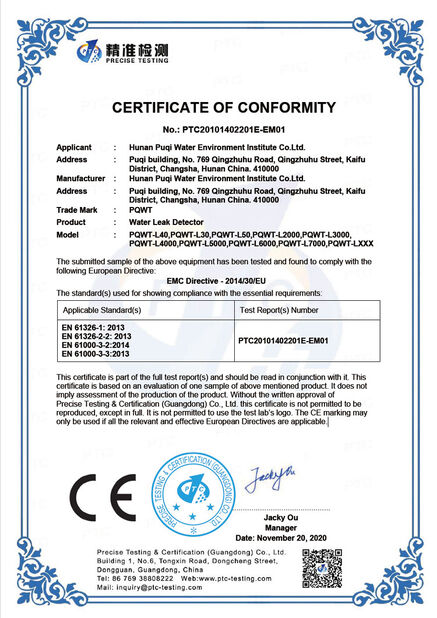Pipeline leakage is a common problem in daily life, especially when tap water is transported through underground pipelines. Leakage not only wastes water resources, but may also damage the building structure. Therefore, it is very important to detect leaks in a timely and accurate manner. The following are five commonly used methods for detecting pipeline leakage:
1. Direct observation method
Direct observation method is the simplest and most intuitive detection method. By checking whether there are water marks or wet areas around the pipeline, especially high-risk points such as joints, valves and pipe bends, it is possible to preliminarily determine whether there is a water leakage problem. If obvious water stains or water drops are found, there is a high probability of water leakage. Although this method is simple, it is limited by the location and visibility of the leak point, and it may be difficult to find hidden leaks.
2. Pipeline leak detector (listening method, acoustic vibration method)
Pipeline leak detectors usually consist of a probe and a host. The probe is responsible for capturing sound signals in the pipeline, which mainly come from the weak sound or vibration generated by the leak point. The host is responsible for amplifying and processing these signals, so that operators can more easily hear and identify the sound of water leakage. Through the change of sound intensity, operators can roughly determine the location of the leak.
3. Infrared thermal imaging method
The infrared thermal imaging method uses an infrared thermal imager to scan the pipeline and locate the leak point by detecting the temperature difference caused by the leak. Leaking points usually cause the temperature of the local area around the pipeline to drop, thus showing cold spots on the infrared image. This method is intuitive and accurate, especially suitable for detection at night or in low temperature environments. However, it should be noted that non-leakage factors such as underground drainage and water accumulation may also affect infrared radiation, so these interference factors need to be eliminated when using it.
4. Pressure test method
The pressure test method is to determine whether there is a leak by increasing the pressure in the pipeline and observing the pressure change. This method requires professional equipment to measure the pressure in the pipeline and test after closing the valve in the determined pipeline section. If the water pressure or air pressure drops suddenly, it may indicate that there is a leak in the section of the pipeline. The pressure test method is highly accurate and is especially suitable for the detection of long-distance and large-diameter pipelines. However, it should be noted that the safety of the pipeline system needs to be ensured before the test to avoid damage caused by excessive pressure.
5. Ground penetrating radar method
The ground penetrating radar method uses electromagnetic waves to scan the underground state and observe the distribution of the state of underground objects from the reflected signal to detect leaks. This method can intuitively display the location and state of underground pipelines, and is particularly effective for pipelines buried deep underground. However, because the underground medium is different from the air, the layers are very messy and the penetration of electromagnetic waves is limited, especially when there is water around the water pipe, it is more difficult to see clearly. In addition, ground penetrating radar instruments are expensive and have not yet reached the stage of widespread use.
There are many methods for pipeline leakage detection, each of which has its advantages and limitations. In practical applications, it is necessary to comprehensively consider factors such as the specific situation of the pipeline, the location and visibility of the leak point, and select the most suitable detection method. At the same time, regular pipeline inspection and maintenance are also important measures to prevent leakage problems.

 Your message must be between 20-3,000 characters!
Your message must be between 20-3,000 characters! Please check your E-mail!
Please check your E-mail!  Your message must be between 20-3,000 characters!
Your message must be between 20-3,000 characters! Please check your E-mail!
Please check your E-mail! 

